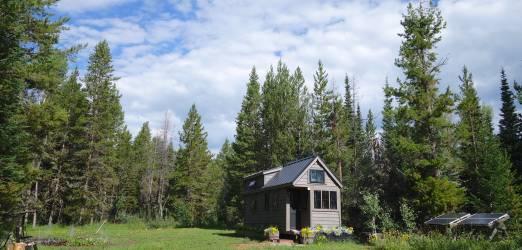You already have a design for your tiny house. But now you need to consider the house area and perimeter. The area is the total amount of space your tiny house will take up. The perimeter is the measurement around the outside of your tiny house.
Determining the area and perimeter will also affect the cost of your tiny house. The smaller the area and perimeter, the fewer materials you will need to build your tiny house.
The standard tiny house is around 100 square feet, with a 12 foot wide by 20-foot long footprint. This gives a tiny house an area of 1,200 square feet. That is a large area for one person to cover.
If you want to keep costs down, consider making a smaller-sized structure that still has everything you need in it while still having enough space for yourself in it too.
There are several different factors that affect this size including where you plan on putting it (on wheels or on foundation), how many people it needs to accommodate, whether or not you plan on having a loft, etc.
A basic rule of thumb is that you need to have one square foot of floor space for every person in your tiny house.
This means that if you are building a tiny house for yourself, you need to make sure that the area is at least 100 square feet (or 10′ x 10′). If you are building a tiny house for two people, then the area needs to be at least 200 square feet (or 20′ x 10′). And so on.
If you are planning on having a loft, then double the number of square feet to account for this extra space. A loft can be anywhere from 12-24 inches high. So if your floor space is already 100 square feet, then adding an 8-foot high loft will give you 108-112 square feet of living space.
For those who want more room in their tiny house, there are plenty of larger plans available that accommodate more than two people and even allow for the inclusion of lofts as well. Many people have taken this idea and run with it to create very large homes on wheels (called micro-homes) or homes on foundations (called cabins).
Some tiny houses are built as multi-walled houses and don’t require flooring because they have multiple floors (also known as lofts). Make sure you take this into account when calculating the area and perimeter of your tiny house.
If you also want to add solar paneling to your tiny house, then make sure you have enough room for the panels. Just add the panels to your design.
Conclusion
Calculating the area and perimeter of your tiny house is important because it will help you determine how much materials you will need to buy.


